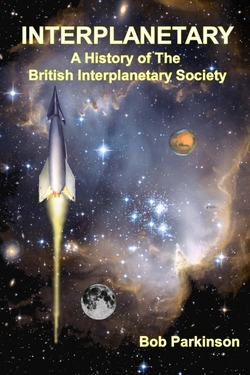Sub-Neptune planets are going to be occupying scientists for a long time. They’re the most common type of planet yet discovered, and they have no counterpart in our own Solar System. The media buzz about K2-18b that we looked at last time focused solely on the possibility of a biosignature detection. But this world, and another that I’ll discuss in just a moment, have a significance that can’t be confined to life. Because whether or not what is happening in the atmosphere of K2-18b is a true biosignature, the presence of a transiting sub-Neptune relatively close to the Sun offers immense advantages in studying the atmosphere and composition of this entire category.
Are these ‘ hycean’ worlds with global oceans beneath an atmosphere largely made up of hydrogen? It’s a possibility, but it appears that not all sub-Neptunes are the same. Helpfully, we have another nearby transiting sub-Neptune, a world known as TOI-270 d, which at 73 light years is even closer than K2-18b, and has in recent work from the Southwest Research Institute provided us with perhaps the clearest data yet on the atmosphere of such a world. This work may prompt re-thinking of both planets, for rather than oceans, we may be dealing with rocky surfaces under a hot atmosphere.
TOI-270 d exists within its star’s habitable zone. The primary here is a red dwarf in the constellation Pictor, about 40 percent as massive as the Sun. Three planets are known in the system, discovered by the TESS satellite by detection of their transits.

SwRI’s Christopher Glein is lead author of the paper on this work. He and his team are working with data from the James Webb Space Telescope, collected by Björn Benneke and reported in a 2024 paper that was startling in its detail (citation below). Seeing TOI-270 d as a possible “archetype of the overall population of sub-Neptunes,” the Benneke paper describes it as a planet in which the atmosphere is not largely hydrogen but enriched throughout, blending hydrogen and helium with heavier elements (the term is ‘miscible’) rather than formed with a stratified hydrogen layer at the top.
Image: SwRI’s Christopher Glein. Credit: Ian McKinney/SwRI.
Glein acknowledges the appeal of planets with the potential for life, the search for which drives much of the energy in exoplanet research. And the new data offer much to consider:
“The JWST data on TOI-270 d collected by Björn Benneke and his team are revolutionary. I was shocked by the level of detail they extracted from such a small exoplanet’s atmosphere, which provides an incredible opportunity to learn the story of a totally alien planet. With molecules like carbon dioxide, methane and water detected, we could start doing some geochemistry to learn how this unusual world formed.”
TOI-270 d, in other words, offers up plenty of detail, with carbon dioxide, methane and water readily detected, allowing as Glein notes the possibility of doing a geochemical analysis to delve into not just the atmosphere’s composition, but how this super-Earth formed in the first place. We have to begin with temperature, for the gases that showed up in the JWST data were at temperatures close to 550 degrees C. Hotter, in other words, than the surface of Venus, a fact that we need to reckon with if we’re holding out hope for global oceans. For at these temperatures gases do some interesting things.
Here the term is ‘equilibration process.’ At a certain level of the atmosphere, pressures and temperatures are high enough that gases reach chemical equilibrium – they become a stable mix. Going higher means both temperature and pressure drop, thus slowing reaction rates. But it is possible for gases to move upward faster than their chemical reactions can adjust to the change, which ‘freezes’ in the composition that was set at the equilibrium level. The mixture ‘quenches,’ in the terminology, and at that point the chemical ratios can no longer change. Finding out where this happens allows scientists to interpret what they see in data taken much higher in the atmosphere.
We are left with the chemical signature of the deep atmosphere where equilibrium occurs. We draw these inferences from the data taken by JWST from the upper atmosphere, offering a broader view of the atmosphere’s composition throughout.
The paper analyzes the balance between methane and carbon dioxide in terms of this quenching, as the relative amounts of the two gases become ‘frozen’ as they move upward. Working out where the balance would occur in a hydrogen-rich atmosphere allowed the team to work out that the freeze out occurred at temperatures between 885 K and 1112 K, with pressures ranging from one to 13 times Earth sea-level pressure. All this points to a thick, hot atmosphere, and one with a persistent conundrum.
For while models suggest that we should find ammonia in the atmosphere of temperate sub-Neptunes, it fails to appear. A nitrogen-poor atmosphere, the authors believe, is possibly the result of nitrogen being sequestered in a magma ocean. The speculation points to a world that is anything but hycean – no water oceans here! We may in fact be observing a planet with a thick atmosphere rich in hydrogen and helium that is well mixed with “metals” (elements heavier than helium), all of this over a rocky surface.

Image: An SwRI-led study modeled the chemistry of TOI-270 d, a nearby exoplanet between Earth and Neptune in size, finding evidence that it is a giant rocky world (super-Earth) surrounded by a deep, hot atmosphere. NASA’s JWST detected gases emanating from a region of the atmosphere over 530 degrees Celsius — hotter than the surface of Venus. The model illustrates a potential magma ocean removing ammonia (NH3) from the atmosphere. Hot gases then undergo an equilibration process and are lofted into the planet’s photosphere where JWST can detect them. Credit: SwRI / Christopher Glein.
The paper also notes the lack of carbon monoxide, explaining this by a model showing that CO would have frozen out even deeper in the atmosphere. Both modeling and data offer an explanation for TOI-270 d but also point to alternatives for K2-18 b. The modeling of the latter as an ocean world is but one explanation. Photochemical models show how difficult it is to produce and maintain enough methane under such conditions. Furthermore, K2-18 b likely receives too much stellar energy to maintain surface liquid water, due to greenhouse heating and limited atmospheric circulation. Thus the paper’s conclusion on K2-18b:
Because a revised deep-atmosphere scenario can accommodate depleted CO and NH3 abundances, the apparent absence of these species should no longer be taken as evidence against this type of scenario for TOI-270 d and similar planets, such as K2-18 b. Our results imply that the Hycean hypothesis is currently unnecessary to explain any data, although this does not preclude the existence of Hycean worlds.
This is a deep, rich analysis drawing plausible conclusions from clearer data than we had previously acquired from transiting sub-Neptunes. The question of water worlds under hydrogen atmospheres remains open, but the galvanizing nature of this paper is that it points to forms of analysis that until now we’ve been able to do only in our own Solar System. I think the authors are connecting dots in very useful ways here, pointing to the progress in exoplanetary science as we go ever deeper into atmospheres.
From the paper. The italics are mine:
Our overall philosophy was to develop modeling approaches that are rooted as much as possible in empirical experience. This experience includes fumaroles on Earth that constrain quench temperatures between redox species in hot gases, and making planets out of meteorites and cometary material to understand how different elements can reach different levels of enrichment in planetary atmospheres. Our approaches were simple, perhaps too simple in some cases if the goal is to accurately pinpoint the composition, present conditions, and history of the planet. If, instead, the goal is to suggest new ways of thinking about geochemistry on exoplanets that maintain focus on key variables and how they can be connected to observational data, as well as large-scale links between what we observe and how the atmosphere might have originated, then a different path to progress can be taken.. The latter is the point of view we pursued.
The paper is Glein et al., “Deciphering Sub-Neptune Atmospheres: New Insights from Geochemical Models of TOI-270 d,” accepted at the Astrophysical Journal (preprint). The Benneke et al. paper is “JWST Reveals CH4, CO2, and H2O in a Metal-rich Miscible Atmosphere on a Two-Earth-Radius Exoplanet,” currently available as a preprint.


